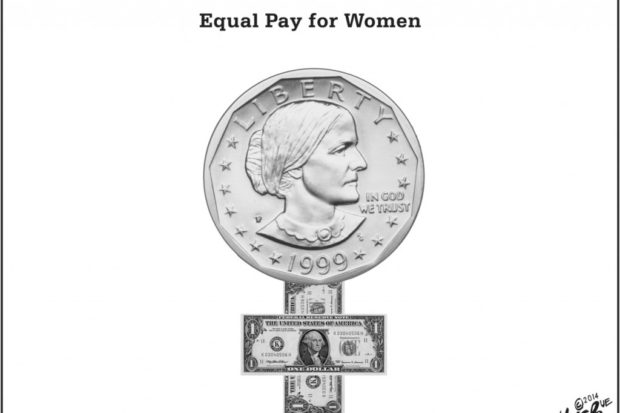
By Aileen Rizo
It was July 2012 when one moment I was a math educator who was happy of my 16-year career accomplishments, and the next moment it all seemed to shatter before me. There I was sitting with some of my colleagues when one of them who just signed his first contract shares that he was placed at Step 9 of the 10-step salary scale. The reality of a truth that pervades our world today became real— discrimination. You see, when I signed my first contract I was placed on Step 1.
When my colleague said those words, my mind quickly reviewed the facts secretly hoping I would miss something. I had more experience, more education and more seniority. So why the disparity? At that moment, I felt like an outcast. I was humiliated, embarrassed and ashamed. The only conclusion I wanted to believe was that it must be a mistake. There was an obvious solution— I would go to HR and they would see the problem and fix it. No need to think about “what ifs”; I believed in the integrity of the institution I worked for.
The next week I met with HR. As I began to share my issue with the HR administrator, she quickly started explaining the disparity of pay away: “We have a formula to set pay. Has anyone explained that to you?” My answer was “No” and I was very interested, especially as a mathematician, in hearing about a formula that would make pay discrimination OK.
The “formula” was simply this— the institution solely used prior pay to base salary. I explained how unfair that was seeing that I moved from Arizona where living expenses and teacher pay was so much lower than California. She seemed to be focused only on ending the conversation. I then shared, “The Equal Pay Act of 1963 states that you cannot pay a woman lower than a man when they are working the same job, unless it is based on education, experience or seniority.” After that statement, the conversation took a dramatic turn. She quickly took out a notebook from her drawer and asked me to repeat some facts as she wrote notes. I wish I could tell you that after the conversation, everything was set right and the policy was revised. However, that is far from the journey I have taken since then.
After a month of waiting for a reply, I received a letter that in essence said, “We know you feel slighted, but we are standing by our policy.” I appealed to higher administration and even the newly elected superintendent to no avail. My upper-level supervisor was even reprimanded for her effort to advocate for me. With all my internal efforts exhausted, I felt defeated.
My husband and I talked about what to do. He said something I will never forget. “One day we will share one of three stories with our daughters. We fought injustice and won, we fought injustice and lost, or when there was injustice we did nothing.” I knew I would rather lose a fight against injustice than to walk away. When we decided to get a lawyer, we had no idea how long it would take, or how much we would invest both emotionally and financially.
It took six months alone to obtain the right to sue from the Department of Justice (this is needed when suing a state or federal entity). Last December, Maria Shriver and NBC caught wind of my story. She visited me at my home to cover my fight for equality as part of her Shriver Report. It aired on NBC Nightly News. Currently, we are in the discovery and deposition process of the case. The projected trial date is not until January 2016.
Although many may argue about what the pay gap actually is—23 cents, 12 cents…etc.—no one argues the fact that it exists. The reality is that even if the pay gap is 5 cents, over the course of a lifetime of work that still amounts to thousands of dollars that women lose in wages and retirement. To solely use prior pay to base salary intentionally perpetuates this gap. Women, more so minority women, are especially susceptible to policies such as this. Statistics show that women begin earning less right out of college.
The continuing argument between political parties is in regard to the choice of remedy for pay discrimination. Many would say that we do not need more laws. Yet I am grateful for the Lilly Ledbetter Act, without which I would never have had the chance to fight the discrimination I experience. Laws such as this do not open the door to frivolous lawsuits. No one would prefer the path of a lawsuit and the drain of standing up to institutions that have deeper pockets and no urgency to resolve the issues for which they have no emotional tie. Many women, like me, work years without knowing that the man they sit next to is taking more money home to his family. Laws like the Paycheck Fairness Act would create transparency and accountability for employers.
My story is not over. Every day I go to work and expose myself to twists of the discrimination knife that continues to inflict me. Praise for work well done, requests for work that I am more highly skilled to complete and statewide recognition for my expertise is tainted with the reality that my employer chooses to continually pay the only full-time woman in the math department less than her male counterparts. All of this is worth it for three beautiful reasons—my daughters. I look into their eyes every day and pray they never have to experience discrimination. Change can happen and if I can borrow the words of Emma Watson, “If not me, who? If not now, when?”
*****
Aileen Rizo is an educational math consultant for the Fresno County Office of Education. Contact her at witeroez@gmail.com.
